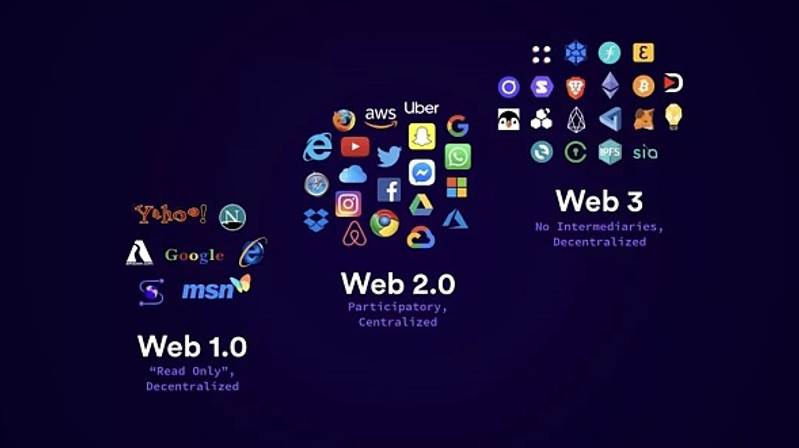The virtual worlds of the Web3 are teeming far beyond the West

(excerpt of the GEAB 161 / Jan 2022)
If we look at the present reality of Web3, we can see that there are in fact many more users in non-Western countries. If we take the proportion of the national population that owns NFTs as a criterion, Asian countries are over-represented in the top 20. What is even more striking is that only four out of twenty countries are Western countries.[1] When looking at cryptocurrency holders, the US and the UK are in the top 5, but India is the leader and Nigeria and Vietnam are third and fourth respectively.[2]

Figure – Number of cryptocurrency holders by continent. Source: Triple A
The most popular existing metaverse projects in terms of user numbers and media coverage are all three video games, which are called play-to-earn, meaning that players are paid for their activities in the game. Axie Infinity, which has more than 2 million active users,[3] is a game developed by the Vietnamese studio Sky Mavis.[4] An entry fee is required, one has to buy at least three Axies, which technically speaking are NFTs. Then the game allows to evolve, to multiply them, to acquire additional ones by playing – and not by paying this time – and to resell them to other users of the game or to new entrants. All transactions are carried out in cryptocurrency, which can be converted into fiat currency and therefore into cash that pays the bills. The sums generated may seem derisory for an inhabitant of a developed country, but they are not for others, such as in the Philippines where a large part of the population now gets a significant part of their income from this game.[5]
Especially since the cryptocurrencies used in this type of game have so far experienced a clear inflation compared to fiat currencies, the added-value is mechanical. The company has grown dramatically in 2020 and 2021 and has offered an alternative to many workers whose income has been affected by the pandemic.
The other two are also games but offer much wider possibilities. They are virtual worlds comparable to Sim’s, Second Life, or the game Roblox. The first is Decentraland, created by two Argentinian developers and located in China.[6] This is a virtual world, a closer replica of the real world, in which you can buy lands, i.e. spaces, which you can then use as you wish. Here again, each land is an NFT, and each transaction is carried out in cryptocurrency. Decentraland thus belongs entirely to its users, who have a great deal of freedom to develop it. Beyond the “lands”, one can create, and therefore buy and sell, any type of goods, but also services. For example, Sotheby’s has replicated the building of its London headquarters and organised tours of its virtual gallery,[7] and architectural firms specialise in creating virtual buildings.[8]
Perhaps the most original aspect of the project is the way decisions are made. To become a Decentraland user, you simply acquire units of their cryptocurrency (Mana tokens). You do not need to own a plot of land. Once you do, you have voting rights, proportional to the number of tokens in your possession. Decisions are made by majority vote, can be suggested by any user, and are implemented automatically and decentrally through a DAO.[9]
The Sandbox project is comparable to Decentraland in every way, acquired in 2018 by Hong Kong-based gaming software company Animoca Brands. It opened its doors to users more recently and has been a very quick success with a plot of land selling in ethereum for the equivalent of 450,000 USD.[10]
So, we have a universe in which anyone can invest, become an owner and participate in the trade of goods and services, and propose and vote on decisions about the organisation and its evolution. Given that these “games” have no precise and final objective, their development prospects are limited only by those set by their users. It is therefore a virtual society with its own economic and political system, the development of which has very few limits. The fact that such projects have been able to expand in just a few months demonstrates the immense potential of Web3, which is again only at an embryonic stage.
Join the GEAB Community on LinkedIn for more discussions on this topic.
_______________________
[1] Source: Finder, 23/11/2021
[3] Source: Financial Times, 11/12/2021
[4] Source: Tech in Asia, 21/02/2020
[5] Source: YouTube, 13/05/2021
[6] Source: CrunchBase
[7] Source: Artnet, 07/06/2021
[8] Source: Archinect, 13/12/2021
[9] DAO – Decentralised Autonomous Organisation, is a form of social contract that binds users. The foundations are laid before its creation, it is registered on the block chain and an automated computer code is associated with it. Once in place, any changes can be proposed by its users, i.e. those who hold the corresponding tokens, submitted to a vote, and, if validated, applied automatically by the computer code.
[10] The plot is adjacent to that of rapper Snoop Dogg, who has been involved in communicating the project, speculation has followed the real-world trend of a ‘star quarter’ attraction. Source: Bitcoin, 04/12/2021



Comments